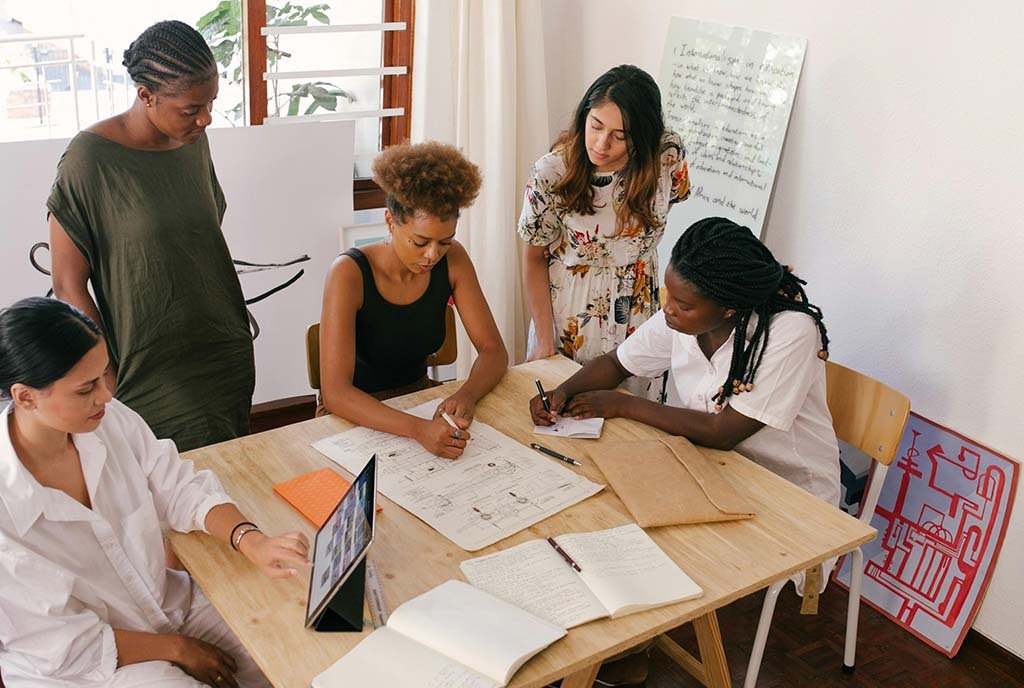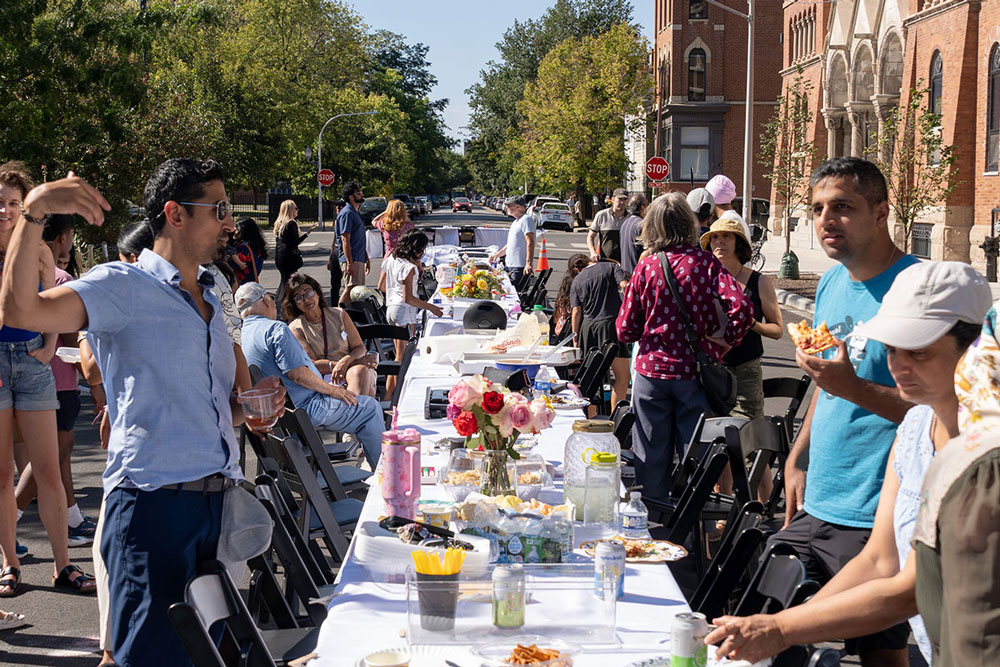
Discussions of trust-based philanthropy have gained increased prominence over the years, but how can philanthropy operate as an effective part of social justice movements—beyond just providing grants to movement nonprofits? It’s a question that I have struggled to answer for years.
Moving from being simply philanthropic critics to co-creating movement infrastructure…provided many opportunities to change longstanding practices.
For the longest time, I was on the movement side of that question and was highly critical of how philanthropy operates. Now, as board chair of the Boston-based Hyams Foundation, I find myself on the funder side, which means it’s my job to help the foundation move from critique to action. Of course, this is a foundation-wide effort, one in which both our board and staff have been engaged.
As one of our former trustees, Omar Simmons, has put it, Hyams is a “movement organization that happens to have an endowment.” As a movement funder, we see our role as helping to strengthen the infrastructure of the movement ecosystem and to engage other funders in this effort.
Moving from being simply philanthropic critics to co-creating movement infrastructure with movement and philanthropic partners has provided many opportunities to change longstanding practices. Here, we share some of the lessons Hyams is learning and the ongoing challenges of sharing power with movement partners in the Building Movement Infrastructure Project (BMIP).
Becoming a Movement Funder
First: some information on how we got to this point. Hyams certainly did not always see itself as a movement funder. Our journey has been long and gradual.
Like most foundations, we were endowed through wealth accumulated through extractive capitalism. In our case, Godfrey Hyams passed on a fortune amassed in mining and railroads to his sisters in 1927. For more than a half-century, the foundation funded settlement houses and social services. By the time Beth Smith became executive director in 1990, no Hyams family members were involved, and the foundation began to expand its grantmaking to support community organizing.
In 1997, our mission was revised to incorporate “economic and social justice and power.” Importantly, Hyams also began to diversify its board and staff. In the 1990s and 2000s, the foundation identified priority areas: housing, youth development, and civic participation—focusing on communities of color.
The new millennium accelerated internal changes, such as hiring David Moy, a community leader of a grantee group in Boston’s Chinatown. The board became majority people of color, including members from community partners. In 2011, Marti Wilson Taylor became our first board chair of color and challenged the organization to apply a racial justice lens at every level of our work. In 2016, Smith retired, leading the way to Hyams hiring its first executive director of color, Jocelyn Sargent.
Movement infrastructure goes beyond capacity building…it is the resources, skills, and people that serve the whole movement ecosystem.When Sargent transitioned from leadership in 2019, we grappled with our identity as a philanthropy and our desire to be a racial justice movement funder. Moy, who became interim executive director in 2019, observed that “we talk about movement. We talk about ecosystem, yet we don’t truly act as we’re part of it.…We can’t act as the sole decider of things.”
A Movement-Designed Plan
In the summer of 2021, our foundation convened 10 BIPOC-led grantees to develop a plan for building social justice movement infrastructure in Boston and Massachusetts.
Our focus was on movement infrastructure because this work is often taken for granted and underfunded. Yet, it is the critical backbone that makes all other work possible. Movement infrastructure goes beyond capacity building for individual organizations; it is the resources, skills, and people that serve the whole movement ecosystem, which includes organizations, networks, and leaders.
The grantees we convened—because they had direct community knowledge from their work on housing justice, climate justice, transportation, immigration, workers’ rights, and many other issues—were well positioned to assess the health of the overall movement ecosystem. Rather than hiring outside consultants, Hyams resourced these groups to be a design team to identify the strengths and gaps and an intersectional vision for where the movement could be in 10 years.
Based on our conversations in 2021, six pilot projects and five infrastructure mini-funds were launched the following year. These projects received about $1 million from Hyams and matching funds from other foundations. By the year’s end, one pilot had provided an organizing training school for more than 20 groups in Boston, Brockton, and Springfield.
Another project provided training, mentoring, and stipends for nine young adult organizers preparing to take roles in adult-led organizing groups. Other projects were supported through the design stage, like a fellowship for communications staff. By 2023, we turned over decision-making about the infrastructure mini-grants to an allocations committee of base-building movement groups.
Sign up for our free newsletters
Subscribe to NPQ's newsletters to have our top stories delivered directly to your inbox.
By signing up, you agree to our privacy policy and terms of use, and to receive messages from NPQ and our partners.
Arriving at this moment has not been without internal tensions and challenges. Our staff and board have developed deep and authentic relationships with our community partners, yet inviting grantees to set the agenda and funding priorities required us to step out of our positions of power and privilege.
Co-Creating Movement Infrastructure
Hyams’s current effort to co-create movement infrastructure with partners builds on more than two decades of experimentation and learning. Over that time, while we had learned to listen deeply to the field to inform our grantmaking strategies and supported emerging organizations and leaders, especially in immigrant communities, it remained up to the staff and board to make actual grant decisions.
The Building Movement Infrastructure Project brought movement partners in from the beginning. Each of the anchors received $25,000 as consultants to participate in a six-month design process. We define an anchor group as “a grassroots organization that plays a critical role in sustaining local, regional and/or national coalitions and networks.”
Many of these groups had already worked together in other alliances and coalitions, but some had not. The design team collectively assessed the state of their movement and identified the gaps that stood in the way of making the next qualitative leap forward in their power building efforts.
The design team then developed a 10-year North Star to guide our movement infrastructure work in Boston and across the state. Key elements of this vision include:
- A robust social justice ecosystem anchored by strong BIPOC-led organizing groups
- At least double the current amount of collectively owned and governed land, housing, and businesses
- Resources (from public, nonprofit, and mutual aid sources) to meet basic needs and to grieve, heal, fight for justice, and support each other
- Better organizing to fight against state-sponsored violence
- Ownership of the mechanisms necessary to communicate easily with residents and other stakeholders
- Increased public and philanthropic resources that will be used to support local and statewide networks of grassroots organizations
Six priority areas were identified in the design team’s initial plan: communications, leadership pipeline, advanced organizing, fundraising, technology/IT, and physical space. The design process also produced detailed proposals for 16 pilot projects in 2022, funded by $1 million in grants.
Here are a few examples of these pilots:
- Youth organizing fellowship supported 10 young people transitioning to adult leadership
- Leadership pathways for early- and mid-career grassroots fundraisers brought together 44 organizational leaders to develop their fundraising skills in 2023
- Small grants from a participatory grantmaking committee to support projects such as executive director transitions, organization and financial restructuring, and the creation of a new solidarity economy “lifestyle magazine.”
This year, we aim to expand our movement infrastructure projects. Movement partners have identified needs for more intensive support for new executive directors, a fiscal sponsorship administrative hub to serve movement groups that do not want to pursue their own 501c3, and a digital organizing fellowship for communications staff.
It mattered that this process was not just about diagnosing the problems but also getting to action and solutions.
Lessons We Are Learning
Through ongoing reflection and evaluation, we are refining our practice. Here are a few lessons we think might be helpful for the field to consider.
- Create a shared vision by grounding analysis in community: The design process intentionally created space for analysis of where the movement is and its strengths and weaknesses. One anchor group noted that “the North Star conversation was really well-designed.…We started from two or three questions, and we were…asked to filter our thoughts through those questions. The fact that it was constructed and not completely open-ended was helpful.”
- Center trust and tend to relationships: Building trust in advance of the visioning process is critical. One leader commented, “I don’t think this would’ve been possible without the deep relationship building that Hyams has done over the years.” Another person noted that the preexisting trust enabled “a lot of ownership in how we are moving this process as stakeholders.” Another valuable aspect of the process was the relationships built among the community groups, not all of whom had worked together closely before.
- Strengthen our ability to collectively solve problems, make decisions, and work together: One vital outcome of this process has been building a safe space for collective problem sharing and solving. It mattered that this process was not just about diagnosing the problems but also getting to action and solutions. One leader shared that “a lot of times we can be in spaces with philanthropy that get a little bit too much talk and exploration, and not much…real action and impact.” In this case, the plan that emerged was a true joint action plan, with ownership shared by Hyams and its anchor partners.
- Resource the movement by funding anchor organizations and organizing other foundations: Many times, funder-grantee convenings lack resources, with many grantees participating because they hope for future resources. Here, the process began with an explicit commitment by Hyams to make its resources available to the ecosystem—and to organize other funders to add to those resources.
Reflections for the Field and Future
We are excited about what lies ahead. A core set of funding partners has convened to study this process. Over $2 million from four funders is already expanding the pool of resources to implement the plan.
Our funding partners are, like Hyams, transforming themselves. One says, “I am no longer interested in providing funding to the nonprofit industrial complex.…I’m interested in supporting change, and community self-determination.” Another agrees that infrastructure needs to be a focus: “Funders like to give money to what’s sexy, to what’s out there on the streets. They want to see people canvassing, on the picket line, on the marches; but…out of their own privilege, they forget that to get that done, there is a lot of unseen labor.”
Ultimately, funders engaging in a co-creation process share power and relinquish exclusive control over resources. As one anchor leader reminds us, “Sharing power comes with trust.” This shift is simple to say, though challenging to do, for philanthropy. The key point, one funding partner said to us, is “to open their hearts to our communities.”











